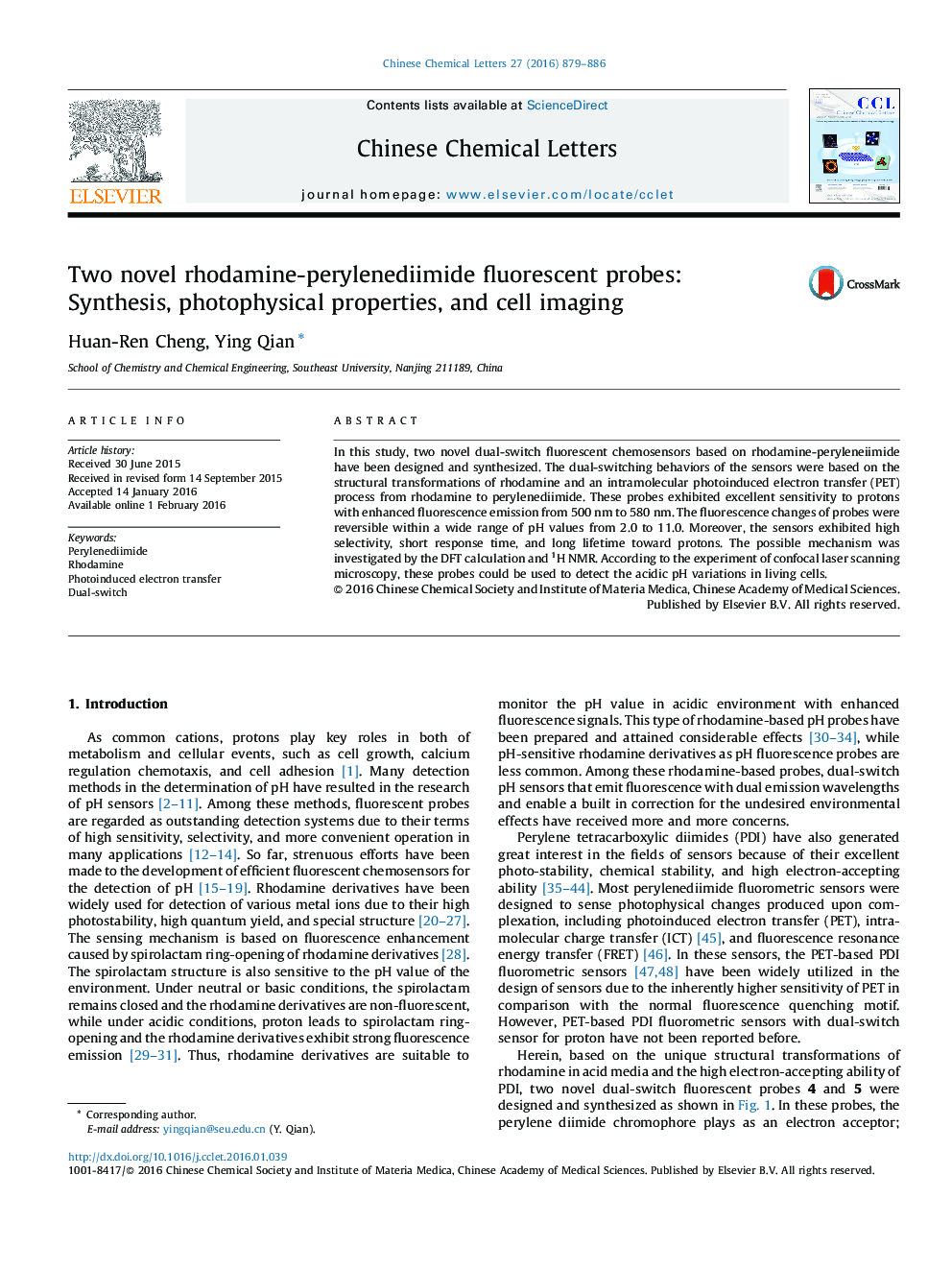| Article ID | Journal | Published Year | Pages | File Type |
|---|---|---|---|---|
| 1254296 | Chinese Chemical Letters | 2016 | 8 Pages |
In this study, two novel dual-switch fluorescent chemosensors based on rhodamine-peryleneiimide have been designed and synthesized. The dual-switching behaviors of the sensors were based on the structural transformations of rhodamine and an intramolecular photoinduced electron transfer (PET) process from rhodamine to perylenediimide. These probes exhibited excellent sensitivity to protons with enhanced fluorescence emission from 500 nm to 580 nm. The fluorescence changes of probes were reversible within a wide range of pH values from 2.0 to 11.0. Moreover, the sensors exhibited high selectivity, short response time, and long lifetime toward protons. The possible mechanism was investigated by the DFT calculation and 1H NMR. According to the experiment of confocal laser scanning microscopy, these probes could be used to detect the acidic pH variations in living cells.
Graphical abstractThe dual-switching behaviors of the sensors were based on the structural transformations of rhodamine and an intramolecular photoinduced electron transfer process. The probes exhibited excellent sensitivity to protons with enhanced fluorescence emission from 500 nm to 580 nm.Figure optionsDownload full-size imageDownload as PowerPoint slide
